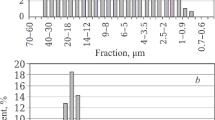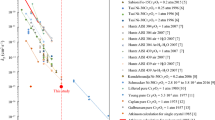Abstract
The growth mechanism of the flat and adherent scale formed at 900°C in 0.1 atm oxygen on chromium, which contained 1 ppm (wt) sulfur, 0.08 ppm (wt) chlorine, and 0.2 ppm (wt) phosphorus, has been found to be very different in adjacent parts of the scale, consistent with the results of previous tracer studies of the growth mechanism of chromia formed on chromium. In some places, it grew primarily by chromium transport, while in others it grew primarily by oxygen transport and in still others it grew by a mixture of both. New oxide formed within the outer part of the scale and, in some cases, throughout the scale. A tentative hypothesis is proposed to explain why growth mechanisms were different in different parts of the scale on the same specimen. The scale formed at 950°C on Fe–20%Cr–0.11%Si, which contained 15 ppm sulfur, grew predominantly by cation transport, with only a small amount of oxygen transport. In this case also, new oxide formed within the outer part of the scale.
Similar content being viewed by others
REFERENCES
D. G. Barnes, J. M. Calvert, K. A. Hay, and D. G. Lees, Phil. Mag. 28, 1303 (1973).
M. Arjomand, M.Sc thesis, University of Manchester, Manchester, England (1978).
P. Skeldon, J. M. Calvert, and D. G. Lees, Phil. Trans. Roy. Soc. 296, 545 (1980).
R. J. Hussey, D. F. Mitchell, and M. H. Graham, Werkst. Korros. 38, 575 (1982).
M. Skeldon, J. M. Calvert, and D. G. Lees, Oxid. Met. 28, 109 (1987).
J. B. Wilkinson, S. Brooks, and D. G. Lees, Mater. Sci. Technol. 4, 1114 (1988).
M. J. Bennett, A. T. Tuson, D. P. Moon, J. M. Tichmarsh, P. Gould, and H. M. Flower, Surf. Coat. Technol. 51, 65 (1992).
P. Fox, D. G. Lees, and G. W. Lorimer, Proc. Conf. Microscopy Oxidation, M. J. Bennett and G. W. Lorimer, eds. (Cambridge, 1990), p. 92.
L. Zhou, D. G. Lees, R. D. Arnell, and A. Chew, J. Mater. Eng. Perform. 4, 242 (1995).
D. G. Lees, Oxid. Met. 27, 75 (1987).
P. Fox, D. G. Lees, and G. W. Lorimer, Oxid. Met. 36, 491 (1991).
P. Y. Hou and J. L. Smialek, Scripta Met. 33, 1409 (1995).
Y. Matsuda, H. Anada, and H. E. Bishop, Surf. Interface Anal. 21, 349 (1994).
W. Dong, D. G. Lees and G. W. Lorimer, to be published.
W. Dong, Ph.D. Thesis, University of Manchester, Manchester, England (1997).
Author information
Authors and Affiliations
Rights and permissions
About this article
Cite this article
Dong, W., Bishop, H.E., Johnson, D. et al. An Investigation of the Growth Mechanism of Scale Formed on Chromium Containing Low Amounts of Sulfur, Chlorine, and Phosphorus. Oxidation of Metals 54, 509–525 (2000). https://doi.org/10.1023/A:1004646803204
Issue Date:
DOI: https://doi.org/10.1023/A:1004646803204




